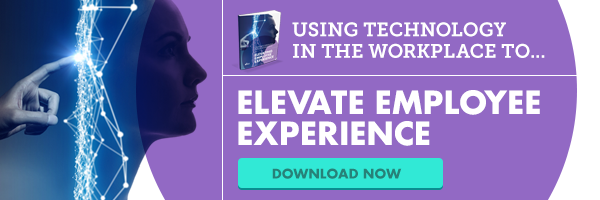Millennials vs. Gen Z In the Workplace: Hopes, Habits and Hangups


When Millennials starting flooding the workplace in the mid-2000s, it marked a major change in how employers approached managing the workforce. Millennials had particular opinions and expectations that sometimes clashed with their Gen X predecessors. As a result, thousands of articles began appearing about the “best ways to manage Millennials” and “how to update your workplace to attract Millennials.”
But now that most Millennials are in their 30s, there’s a new generation whose opinions and expectations employers need to worry about: Generation Z.
Born between 1997 and 2012, members of Gen Z share a few similarities with Millennials, specifically in terms of workplace flexibility and mobility. But when you take a deeper look at Millennials vs. Gen Z, there are some pretty big differences between the two generations. As a workplace leader, it’s your responsibility to create an environment where employees of all generations are engaged and productive.
Here’s what you need to know.
Millennials vs. Gen Z: Education and Training
Thanks to the skyrocketing cost of higher education, members of Gen Z are opting to forego college in order to avoid years of student loan debt.
Cultural consulting firm Sparks & Honey found that 75 percent of Gen Z believe attending college is not the only way to get a good education. Members of Gen Z are enthusiastic about self-driven learning and independent research, with a third of Gen Zers reporting they watch lessons online and 20 percent download textbooks to their tablets.
From a recruiting standpoint, employers will need to consider dropping degree requirements from job openings or risk substantially narrowing their available talent pool. In addition, this desire for self-directed education means any employer who wants to attract Gen Z job seekers must offer plenty of opportunities for on-demand training via eLearning software and online professional development tools.
Key takeaway: While formal on-the-job training classes may be adequate for Millennials, they will be unappealing to members of Gen Z.
Millennials vs. Gen Z: Technology
Millennials may have been exposed to rapid advancements in technology at an early age, but Gen Zers have literally never known a world without the internet. More than 90 percent of Gen Z has some sort of digital footprint, and over half of American children will own a phone by the time they’re 7 years old.
Cutting-edge, user-friendly technology is at the top of both Millennials’ and Gen Zers’ employer wishlist. But the specifics of what Gen Z wants is a bit different, due to what Altitude (now a part of global management firm Accenture) refers to as Gen Z’s “eight-second filter”.
In his article for Fast Company Jeremy Finch, former strategist at Altitude, explains that Gen Z has “grown up in a world where their options are limitless, but their time is not.” As a result, they rely on trusted content curators to collect the most relevant news and reduce it to digestible chunks.
What this means is workplace leaders must shift their communication technology priorities away from focusing solely on providing the chat and instant messaging tools Millennials favor. Instead, companies need to implement interactive solutions that quickly and efficiently communicate only the most important information to the workforce. A good example of this kind of technology is digital signage. Digital signage helps keep the workforce up to date on the latest company and workplace news without a lot of background noise — something Gen Z employees appreciate.
Key takeaway: Make it easy for Gen Z employees to stay connected to their workplace, and get the information they need to be productive.
Millennials vs. Gen Z: Work Habits
Opportunities to collaborate and work in a team are highly sought-after by Millennials. These professionals live by the motto, “Two heads are better than one.” Gen Z, on the other hand, is more of the opinion, “If you want it done right, do it yourself.”
Gen Zers take a much more solo approach to completing tasks than their Millennial counterparts and appreciate the opportunity to sit in their own workspace, achieve a flow state and knock out a project. That means workplace leaders should not fault Gen Z employees who don’t leap at the chance to work on something that requires them to rely heavily on others.
Your organization can support both generational differences and individual preferences by providing a balance of private work spaces and collaborative areas—a concept known as activity-based working (ABW).
Another common characteristic among Gen Zers is their belief that failure is not fatal. In a survey conducted at last year’s EY International Intern Leadership Conference, over 80 percent of the Gen Z participants said embracing failure will help them be more innovative in the future. Seventeen percent said not being afraid to fail will make them more comfortable to take on risks.
According to Natasha Stough, EY Americas Campus Recruiting Leader, “With the next generation of our workforce not afraid to fail in order to grow and innovate, organizations should create an environment that allows them to bring their ideas forward, fail fast, and then learn from that failure.” Stough says employers must encourage Gen Z employees to be “fearless innovators.”
Key takeaway: Adopt an agile work environment that makes it easy for employees of all both generations to choose how and where they work best. And provide frequent feedback so Gen Z in particular can learn from their mistakes.
Keeping generational differences in mind can help you when you’re thinking about what each employee needs to do his or her best work. But regardless of generation, creating a workplace that works for everyone starts with a modern office design and user-friendly workplace technology.
